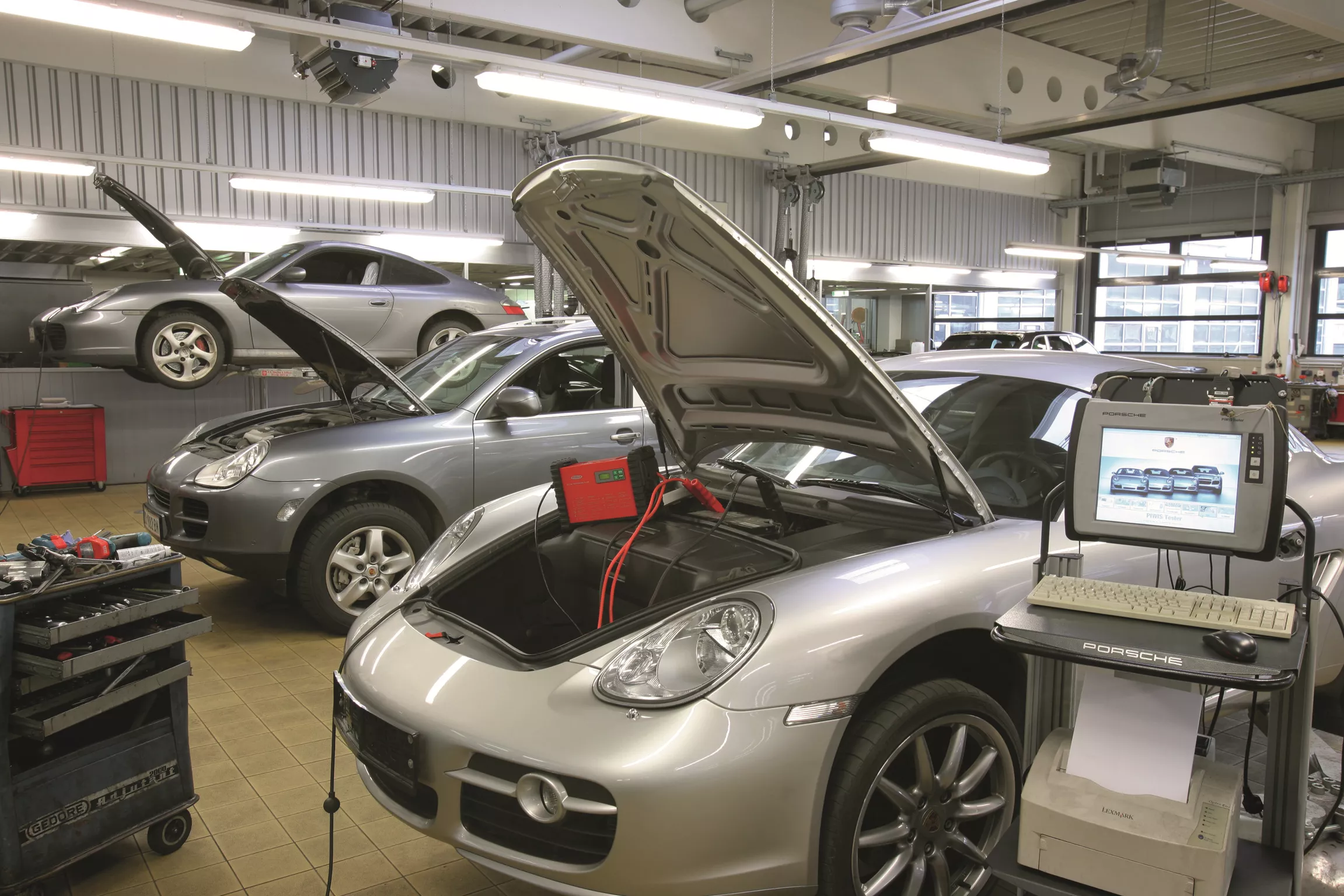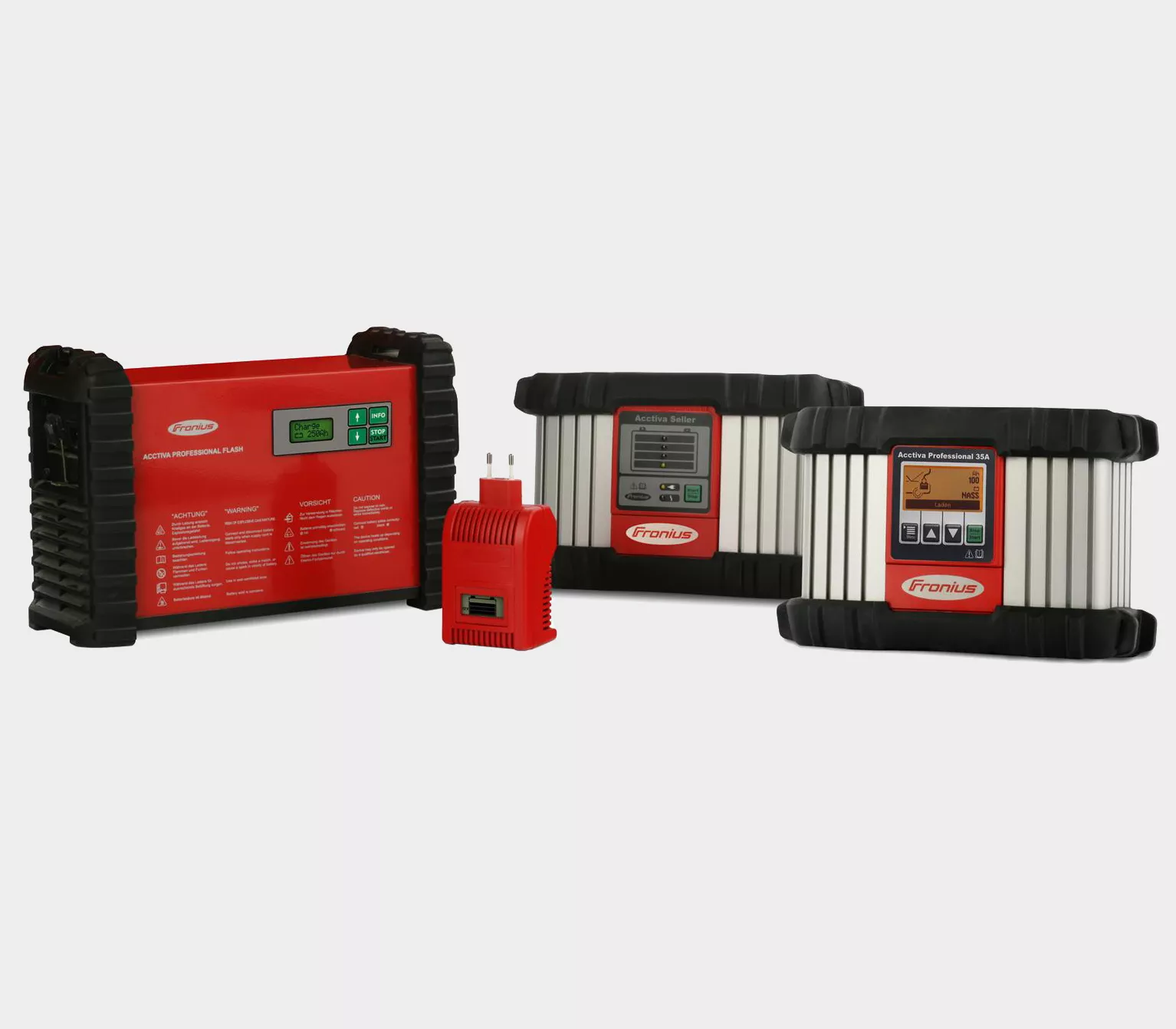Over 70 yearsof experience in battery charging technology
From numerous variants of the lead battery to AGM and EFB technology and on to lithium-ion batteries, there are now countless possibilities for supplying vehicles with energy. As an expert in all aspects of starter batteries, Fronius provides you with a comprehensive overview of all the usual types of battery and highlights the advantages and disadvantages of the different technologies.
Battery technologies

Starter batteries or SLI batteries (starting, lighting, ignition) are used to start combustion engines. They supply a large amount of energy for short periods and can carry out several thousand starts. Starter batteries are not designed to supply consumers with energy for long periods. These batteries are also sensitive to deep discharges, which can cause permanent damage to the battery. The cycle stability gives an insight into the long service life of a starter battery.
A variety of different battery technologies are currently available on the market. All of them function according to the same principle: two oppositely charged electrodes, the positive and negative pole, connected by an additional electrolyte layer. The electrolyte can be in liquid or gel form, or it can be bound in a layer of fibres. If the circuit is closed, electrons flow from the negative pole to the positive pole, releasing electrical energy. During charging, the electrical voltage reverses this process, and the capacity of the battery is restored.


